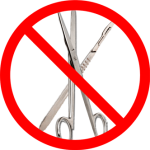Cervical Herniated Disc
Sometimes known as a “slipped” or “ruptured” disc, a herniated disc may exert pressure on the nerves or spinal cord in the neck. The resulting pain may travel down the arms or up into the head.
Signs and symptoms
- Sharp shooting pains down the arm
- Pain extending to the hand and fingers
- Neck pain
- Worsening of pain with certain neck motions
- Weakness in the arms or hands
- “Pins and needles” in the arms and fingers
- Neck stiffness
- Possible weakness, stiffness, or heaviness in arms
Why it hurts:
Discs are soft, gelatin-like pads located between the hard bones or vertebrae that make up the spinal column, which encases the spinal cord and other nerves. Discs function as shock absorbers when you flex, rotate or bend your neck. Each disc contains a gel-like substance called the nucleus. When a disc herniates or ruptures, part of the center nucleus may push the outer edge of the disc into the spinal canal, sometimes exerting pressure on the nerves and spinal cord. Ruptures can occur as a result of injury, or normal wear and tear associated with aging.
Non-surgical treatment options
- Bed rest for up to 2 days
- Ice compresses for muscle spasms
- Heating modalities
- Physical therapy
- Acupuncture
- Massage therapy
- Electrical stimulation
- Muscle relaxants
- Pain medications
- Epidural steroid spinal injections
